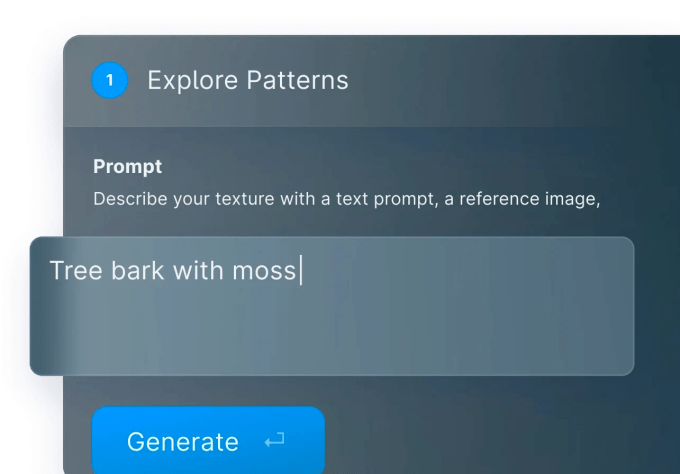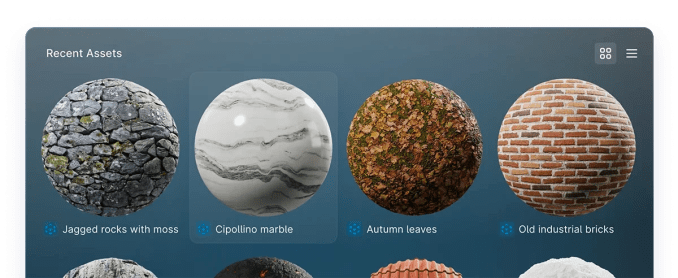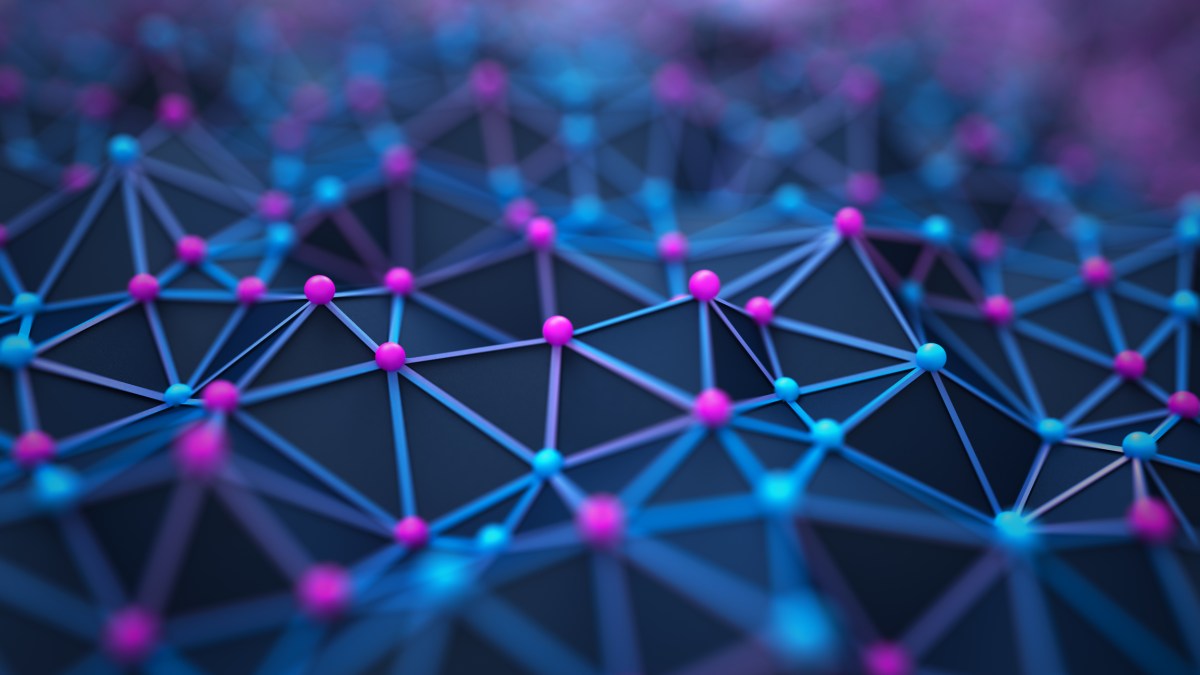As generative AI like ChatGPT and DALL-E 2 appeal to investor consideration, startup entrepreneurs need to money in with new enterprise fashions constructed round them. One of many extra attention-grabbing ventures to emerge from the house not too long ago is Poly, which lets designers create online game and different digital property, together with textures for 3D fashions, utilizing solely textual content prompts.
Poly is basically a inventory asset library alongside the strains of Adobe Inventory and Shutterstock however populated solely by AI generations. Whereas platforms like Getty Photographs have banned AI-generated content material for worry of potential authorized blowback, Poly is barreling full steam forward.
“Virtually everybody is aware of the all-too-common ache of trying to find that good icon, illustration, font or sound impact on-line, solely to surrender and accept one thing imperfect. Poly is attempting to drastically enhance this with a set of generative instruments targeted on creators,” CEO Abhay Agarwal informed TechCrunch in an e mail interview.
Earlier than co-founding Poly with Sam Younger, Agarwal was a analysis fellow at Microsoft, the place he revealed papers within the area of AI for social impression. Agarwal then began Polytopal, a “human-centered AI” consulting firm that labored with manufacturers like Spotify, Meta and Nestlé to develop numerous clever programs. Amongst different initiatives, Polytopal co-created a dance choreography algorithm for the sport BeatSaber and launched a digital baking assistant for Toll Home that helps design a cookie recipe to go well with customers’ dietary wants.
“Younger and I began Poly in early 2022 from a shared ardour to ‘improve the artistic capability of the world,’ and joined Y Combinator’s S22 batch,” Agarwal mentioned.

Picture Credit: Poly
Poly’s first instrument in its deliberate web-based suite generates 3D textures with physically-based rendering maps. In modeling, “physically-based rendering” refers to a way that goals to render photos in a manner that mimics the move of sunshine in the actual world.
With Poly, designers can describe a texture (e.g. “Tree bark with moss”) and optionally present a reference picture to get generated textures for crafting 3D fashions. The fashions are available in customizable resolutions and with regular and invert maps — maps typically utilized in recreation growth so as to add quantity, depth and particulars to 3D objects’ surfaces.
“Poly trains its generative AI fashions with a number of proprietary strategies, equivalent to extracting texture info from regular photos to reinforce its mannequin’s studying capabilities,” Agarwal mentioned.
When requested about how Poly treats extra delicate content material that builders would possibly request, like violent and overtly sexual generated imagery, Agarwal offered few particulars however mentioned that Poly “fastidiously and responsibly” audits its merchandise. “We’ve had no cases of hurt reported to us but,” he added.
Poly sees itself competing each with conventional asset marketplaces and builders’ handbook design processes. Apart from portals equivalent to GameDev Market and OpenGameArt, main recreation engine distributors like Unity host and promote property by way of their very own platforms.
Poly’s additionally not the primary to use AI to producing recreation property. Direct rivals embody Hotpot and Pixela.ai, which use related algorithms to create customized backgrounds, sprites and different artwork content material.
Agarwal asserts that Poly’s generative AI is superior to most when it comes to the standard of property it produces. The jury’s out on that. However Poly goals to additional differentiate itself by increasing its generative AI service throughout asset sorts equivalent to illustrations, sprites, sound results and extra. It plans to generate profits by way of enterprise partnerships, premium integrations for design instruments and by charging a subscription price for royalty-free entry to property, together with industrial and resale rights.
Agarwal claims that “1000’s” of builders are at the moment utilizing Poly’s free service, which generates an infinite variety of property for noncommercial use, whereas “lots of” are paying for Poly’s professional plan. To this point, the platform has generated greater than two million textures.
That momentum drew in traders, together with Felicis, Bloomberg Beta, NextView Ventures, Y Combinator, Figma Ventures and the AI Grant, which collectively contributed $3.9 million in enterprise capital towards Poly at Y Combinator’s demo day in September.
“Poly’s prospects vary from professionals at Fortune 500 corporations to particular person freelancers in recreation design, AR/VR, inside design, structure and 3D rendering for ecommerce and advertising and marketing,” Agarwal mentioned. “Poly has a multi-year runway and may deal with constructing the very best expertise since a higher-quality product is required to face out and win on this rising and extremely lively house.”

Picture Credit: Poly
Assuming Poly broadly catches on, it and its generative AI rivals run the chance of upsetting the artist group — not solely as a result of they may threaten livelihoods however as a result of generative AI programs have been proven to regurgitate the info on which they had been skilled (e.g. current artwork property). On the artwork group portal ArtStation, which earlier this 12 months started permitting AI-generated artwork on its platform for the primary time, members started broadly protesting by putting “No AI Artwork” photos of their portfolios.
The alluded-to authorized questions across the expertise stay unresolved, as properly. One class motion lawsuit alleges that GitHub’s code-generating system, Copilot, regurgitates sections of licensed code with out offering credit score, which may have implications for art-generating AI programs in addition to people who use artwork created by them. In an unrelated case, the U.S. Copyright Workplace not too long ago ended copyright safety for a comic book ebook created with generative AI after initially granting it, saying that solely works created by people are entitled to safety.
Agarwal isn’t involved, although — or if he’s, he isn’t exhibiting it.
“Generative AI is dealing with a number of criticism from creators and is being seen as ‘anti-creator’ as many corporations on this house need to change creators with automated programs. Nonetheless, Poly’s focus has at all times been to empower creators with simpler entry to design property,” Agarwal mentioned. “Constructing on its present momentum, Poly plans to proceed its relentless deal with its proprietary generative AI innovation, mannequin coaching and product growth to assist extra forms of design property and be embedded into designers’ each day workflows.”
Poly has three workers at current, and plans to double its crew within the subsequent six-12 months.

